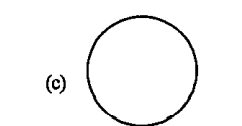What happens to the moon after full moon day?
Step-by-Step Solution:
1. Understanding Full Moon Day: The full moon day is when the entire face of the moon is illuminated and visible from Earth. This occurs when the Earth is positioned between the sun and the moon.
2. Transition After Full Moon: After the full moon day, the visible part of the moon begins to decrease. This phase is known as the waning phase.
3. Waning Phase: During the waning phase, the moon appears to shrink in size. This happens because the sunlight that illuminates the moon is gradually decreasing from our perspective on Earth.
4. Cycle of the Moon: As the days progress after the full moon, the moon continues to wane until it reaches a point where it is no longer visible. This is known as the new moon day.
5. New Moon Day: On the new moon day, which occurs approximately 15 days after the full moon day, the moon is completely invisible as it is positioned between the Earth and the sun.
6. Completion of the Cycle: After the new moon, the cycle begins again with the moon gradually becoming more visible (waxing) until it reaches the next full moon.
Final Summary: After the full moon day, the visible part of the moon decreases until it becomes completely invisible on the new moon day, marking the end of one lunar cycle and the beginning of another.
---
Similar Questions
Knowledge Check
Priyanka observed the phases of the Moon. She saw a full moon in the sky on 19th jan 2009. After 15 days, she new moon. What would be the likely shape of Moon on 18th Feb 2009?
A B
B C
C D
D
Spring tides on a new moon day are much stronger than those formed on a full moon day. Which of the following is the correct explanation for the phenomenon?
AOn a new moon day, the sun and the moon position themselves on either side of the earth along a straight line.BOn a new moon day, the sun and the moon lie on the same side of the earth and along the same straight line.COn a full moon day the sun and the moon lie on the same side of the earth and along the same straight line.DOn a new moon day the gravitational pull of the moon on the earth is at right angles to that of the sun on the earth.The exceptionally high and low tides that occur at the time of the new moon or the full moon when the Sun, the Moon and the Earth are approximately aligned is called
ASpringBFallCNeapDDiurnal
Mahendra calls ghosts or spirits a figment of the imagination. What happens to him on a full-moon night?
View SolutionA closed bottle containing water at 30∘C is carried to the moon in a space-ship. If it is placed on the surface of the moon, what will happen to the water as soon as the lid is opened
View SolutionWhat is the radius of the moon?
View SolutionWhat is the radius of the moon?
View SolutionThe gap between consecutive new moon day and full moon day is :
View Solution
